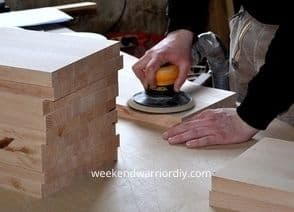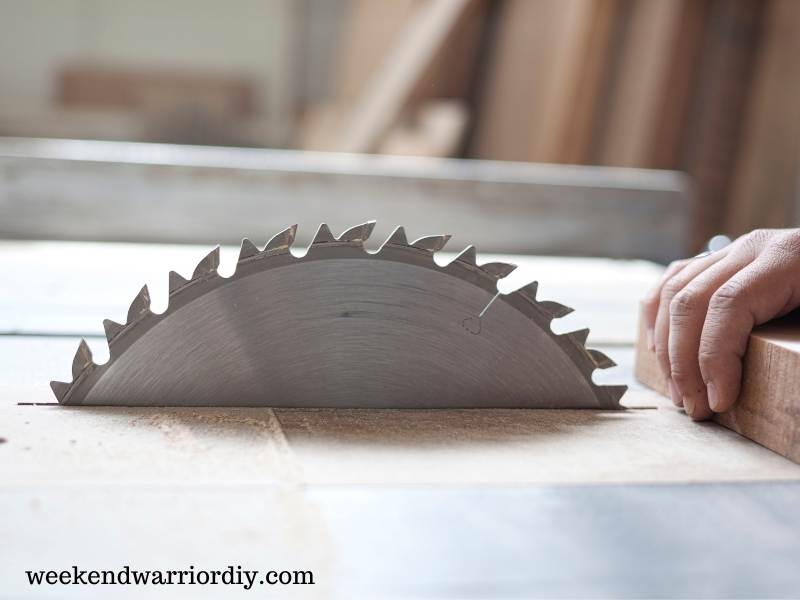Drum sanders are versatile tools that have found their place in the woodworking world. These machines are not as common as their orbital or belt sander counterparts, but they offer unique advantages that make them indispensable for certain tasks. In this article, we’ll delve into the world of drum sanders, exploring what they are, how they work, and the specific tasks they excel at.
Understanding Drum Sanders
Drum sanders are power tools designed for sanding and smoothing wood surfaces. They consist of a cylindrical drum covered with abrasive sandpaper that rotates at high speeds. The wood is passed through the machine and the rotating drum sands away imperfections, leaving behind a smooth and even surface.
These machines are available in various sizes and configurations, making them suitable for both professional woodworkers and DIY enthusiasts.
Perfecting the Finish
One of the primary purposes of a drum sander is to achieve a flawless finish on wooden surfaces. Whether you’re working on hardwood floors, tabletops, or cabinetry, a drum sander can help you achieve a smooth and polished look.
The abrasive paper on the drum can be easily changed to adjust the level of coarseness, allowing you to fine-tune the finish to your liking.
1. Benefits of Using a Drum Sander
Drum sanders offer several benefits that set them apart from other sanding tools:
2. Time Efficiency
Compared to manual sanding, drum sanders are incredibly time efficient. They can cover large surface areas quickly, saving you hours of labor.
3. Consistency
Drum sanders provide consistent results, ensuring that every part of the wood surface is sanded evenly. This is crucial for achieving a professional-looking finish.
4. Versatility
These machines are versatile and can handle various wood types and thicknesses. You can use them for both rough sanding and fine finishing.
5. Reduced Dust
Many drum sanders come with built-in dust collection systems, keeping your workspace clean and reducing the health hazards associated with wood dust.
Applications of Drum Sanders
Now that we understand the advantages of drum sanders, let’s explore the specific tasks they excel at:
1. Sanding Wooden Floors
Drum sanders are widely used in the flooring industry. They can quickly strip old finishes and imperfections from hardwood floors, preparing them for refinishing. The result is a beautifully restored floor that looks brand new.
2. Smoothing Wide Boards
When working with wide wooden boards, achieving a smooth and even surface can be challenging. Drum sanders make this task a breeze, ensuring that your boards are perfectly flat and free of defects.
3. Thickness Planers
Need to reduce the thickness of a wooden panel? Drum sanders can act as thickness planers, allowing you to control the thickness of your wood with precision.
4. Sanding Slabs
For woodworkers dealing with large slabs of wood, such as those used for tabletops or countertops, drum sanders can quickly level and smooth these surfaces, creating a stunning end product.
5. Creating Perfectly Flat Surfaces
Drum sanders are renowned for their ability to create perfectly flat surfaces on wooden materials. This is especially crucial for woodworking projects where a level and smooth finish are paramount, such as when building cabinets or constructing fine furniture.
6. Removing Deep Scratches and Blemishes
When wood surfaces have deep scratches, gouges, or blemishes, drum sanders can come to the rescue. By using progressively finer sandpaper grits, these machines can gradually sand away imperfections, leaving the wood looking flawless.
7. Tackling Resin or Glue Residue
Woodworking often involves the use of adhesives like resin or glue, which can leave behind stubborn residue. Drum sanders equipped with coarser grits can efficiently remove these residues, ensuring a clean surface for finishing or further woodworking processes.
8. Enhancing the Appearance of Exotic Woods
Exotic woods, known for their unique grains and patterns, can be truly stunning when finished properly. Drum sanders excel at enhancing the appearance of exotic woods by revealing their natural beauty. This makes them ideal for crafting high-end furniture and decorative pieces.
9. Restoring Vintage Furniture
Restoring vintage or antique furniture often involves dealing with layers of old paint, varnish, or other finishes. Drum sanders can simplify this process by quickly stripping away these layers, allowing you to restore the piece to its original glory.
In summation, these additional subheadings expand on the versatility and utility of drum sanders in various woodworking applications.
Is it Worth Getting a Drum Sander?
Deciding whether to invest in a drum sander depends on your woodworking needs and preferences. If you frequently work with large wooden surfaces that require a smooth finish, a drum sander can be a valuable addition to your workshop.
However, for occasional or smaller projects, you might find other sanding tools more cost-effective.
***Check out this high end drum sander for sale***
Drum Sander vs. Orbital Sander: Which is Better?
When choosing between a drum sander and an orbital sander, it’s essential to consider your specific project requirements. Drum sanders are excellent for larger, flat surfaces and heavy-duty tasks, as discussed earlier.
In contrast, orbital sanders are better suited for lighter sanding and projects that require finesse, such as refinishing furniture or sanding curved edges. Ultimately, the choice depends on the job at hand.
How Often Do You Need to Change the Paper on a Drum Sander?
The frequency of changing the sandpaper on a drum sander depends on several factors, including the type of wood you’re sanding, the grit of the sandpaper, and the machine’s usage. As a rule of thumb, you should inspect the sandpaper regularly during your sanding tasks.
When it becomes worn, clogged with wood dust, or loses its effectiveness, it’s time to replace it. For heavy use, this might be after a few hours, while for lighter tasks, it could be longer. Proper maintenance and timely sandpaper replacement ensure the best results and prolong the life of your drum sander.
Final Thoughts
In conclusion, a drum sander is a valuable addition to any woodworker’s toolkit. Its ability to provide consistent, high-quality finishes – along with its versatility in handling various tasks – makes it an indispensable tool for achieving woodworking perfection.
Whether you’re a professional craftsman or a passionate DIY enthusiast, a drum sander empowers you to transform raw wood into beautifully finished pieces that showcase your skill and creativity. Therefore, consider adding this powerhouse of precision to your workshop and experience the difference it can make in elevating the quality and aesthetics of your woodworking projects.
*** Need a drum sander? Check this 22″ drum sander out ***
Drum Sander FAQs
To ensure I’m answering most of your questions surrounding drum sanders, I’ve added this FAQ section.
Are drum sanders suitable for beginners?
Drum sanders can be used by beginners, but it’s essential to read the instructions carefully and practice on scrap wood before tackling important projects.
Can I use a drum sander for metal or other materials?
Drum sanders are designed specifically for wood. Using them on metal or other materials may damage the machine or produce undesirable results.
How often should I replace the sandpaper on a drum sander?
The frequency of sandpaper replacement depends on usage. Inspect the sandpaper regularly and replace it when it becomes worn or clogged with dust.
Are drum sanders noisy?
Yes, drum sanders can be noisy so it’s advisable to wear hearing protection when using them for extended periods.
What safety precautions should I take when using a drum sander?
Always wear safety goggles, a dust mask, and hearing protection when operating a drum sander. Ensure the machine is properly grounded and disconnected from power when changing sandpaper or performing maintenance.
Related Posts To Check Out Next
Should You Buy a Trim Router or Plunge Router? A Comprehensive Guide



